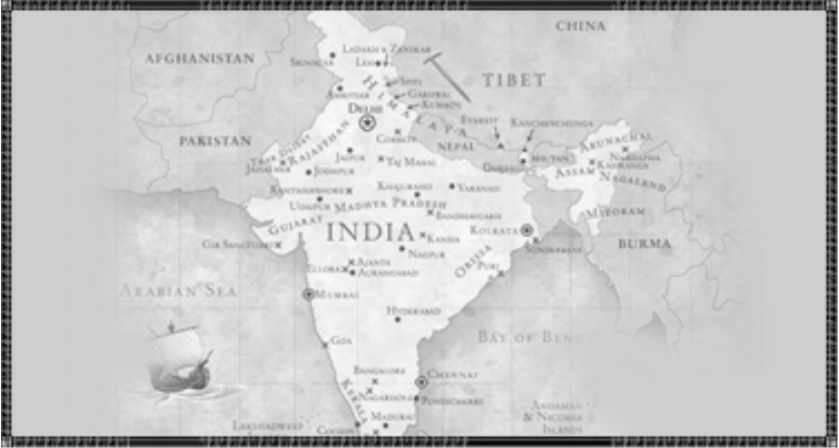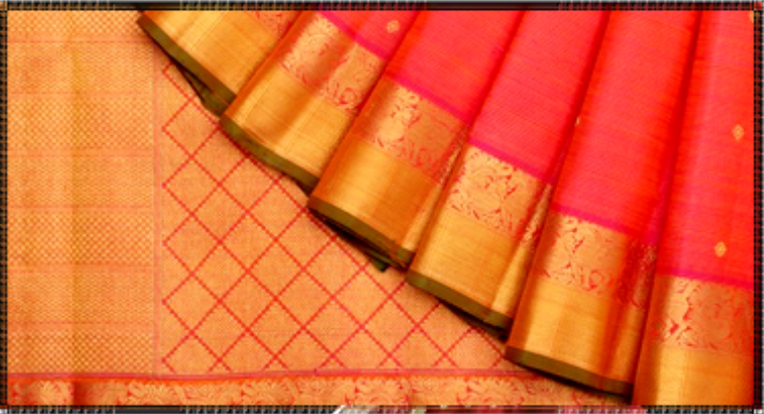History of Indian Silk

How silk was discovered:
According to the 27th century BC tale, the discovery of silk was an accident. It stated that Empress Leizu was having tea one day when a silk worm's cocoon fell into her cup.In its attempt to get out, the thread of the cocoon began to unroll. So the Empress thought of weaving the thread. The Yellow Emperor, encouraged his wife to study the life of silk worm, and so she learned the art of raising silk worms or what is called sericulture. Her entourage was taught as well and thus the advent of the silk industry.
For a very long time, the Chinese kept silk as a secret from the rest of the world. Only in the last half of the first millennium BC the Silk Road or Silk Routes were opened across Asia, linking Mediterranean world as well as North Africa and Europe. At first countries such as India and Japan learnt the science of sericulture and soon joined in on the eastern monopoly of silk production.
Silk in India:
Traders introduced Chinese silk cloth to India, mainly from Samarkand and Bukhara and it gained immense popularity among the royalty and the aristocracy. Jamawar as well as brocade weaving centers in India developed in holy cities and trade centers because of the demand for expensive fabrics by the royal families and temples.
The ancient centers were situated mainly in Gujarat, Malwa and South India.
In the North - Delhi, Lahore, Agra, FatehpurSikri, Varanasi, Mau, Azamgarh and Murshidabad were the main centers for brocade weaving.
The most well known Jamawar weaving centers were in Assam, Gujrat, Malwa and South India

Silk in present India:
Silk in the Indian subcontinent is a luxury good. About 97% of raw silk is produced in the five Indian states of Karnataka, Andhra Pradesh, Tamil Nadu, West Bengal and Jammu and Kashmir. The North Bangalore regions of Muddenahalli and Kanivenarayanapura and Mysore contribute to a majority of silk production. Another emerging silk producer is Tamil Nadu where mulberry cultivation is concentrated in Coimbatore, Erode and Dharmapuri districts. Hyderabad (Andhra Pradesh) and Gobichettipalayam (Tamil Nadu) were the first locations to have automated silk reeling units.
Silk Fabric:
Silk fabric, also known as Paat in East India, Pattu in South India and Resham in North India, is a natural fiber produced from the cocoons of mulberry silkworm via a process called Sericulture. The yarns produced from the process of sericulture are used to weave a variety of textiles.
Various Types & Forms of Silk in India
- Tanchoi Silk: Weaving technique which is a blend of silk from the two countries, India and China.
- Garad Silk: Garad originates in West Bengal, and is distinguished by its red border and small paisley motifs. Silk fabric used to weave Garad sarees is produced by the silk yarns woven close together which imparts the fine texture.
- Jamawar: Jamawar Silk is an adulterated form of Pashmina silk which contains a blend of cotton and wool. This is usually used in weaving shawls for the winters.
- Matka Silk: A rough handloom silk fabric made from the waste Mulberry Silk without removing its gum (sericin) part, largely produced in Karnataka and Kashmir.
- Banarasi/Benarasi Silk: A fine variant of silk evolving from the lands of Beneras or Varanasi, known for gold and silver work of brocade and zari on the fabric.
- Mulberry Silk: Purest form of silk extracted from Silkworms, usually produced in yellow, white, or greenish yellow color.
- Murshidabad Silk: Silk produced at the Silk Mecca of East India.
- Bangalore Silk: Known for its simplicity and purity of Silk, Bangalore silk is produced in the silk farms of Bangalore.
- Angora Silk: Known for tender texture, the Angora silk yarn is made up from the fur of meek Angora rabbit.
- Silk Embroidery: Intricate patterns embroidered in silk on various fabrics.
- Pochampally/Pochampalli Silk: Type of silk originating from the town of Boodhan Pochampally, located in Nalgonda district of Andhra Pradesh, popularly known as the silk city of India.
- Mysore Silk Crepe: Woven from hard spun silk yarn and comes from the silk city of Mysore in Karnataka.
- Sournachuri Silk: Originating from West Bengal, Sournachuri Silk has gold thread incorporated in the weave of silk, hence giving a rich shine to the fabric. It is also known as the illustrious sister of the Baluchari Silk saree.
- Raw Silk: Raw Silk is the most natural form of delicate fibre of silk with no twist and is unprocessed form of silk that can be easily woven into different fabrics.
- Kosa Silk: Comes from Chattisgarh, and is known for its soft texture and dull-brownish look, hence available in shades of gold pale, dark honey, cream, etc. Kosa is one kind of Tussar Silk.
- Tussar Silk: Also known as Wild Silk, Tussar radiates gold sheen in its fabric and is exclusively produced in India.
- Muga Silk: Produced only in Assam, Muga silk yarns are totally yellow in color and is considered as strongest natural fibre.
- Eri Silk: Also known as Errandi and Endi in most parts of India, Eri Silk is the purest forms of silk from the east, with a dull yellow, gold like sheen.
- Dharamavaram Silk: Known for gold-plated borders, Dharamavaram silk orginates from Andhra Pradesh, and is also known as Silk for the Bride.
- Narayanpet Silk: Originates from Andhra Pradesh, the textiles of Narayanpet have a checked surface design with embroidery and the border or pallu have intricate ethnic designs such as a temple.
- Pat/Paat Silk: Produced in Eastern India, Pat silk is known for its distinctive brightness, high quality and durable nature. It comes in brilliant white or off-white shades.
- Cot Silk: A well-blended combination of cotton and silk, Cot silk is a cheaper-priced silk.
- Kanchipuram: Silk from the village called Kanchipuram in Tamil Nadu, India, this one is known for its durability and shine. The rich quality combined with an amazing finish make them last longer.
- Bhagalpuri Silk: Known as the Queen of all fabrics Bhagalpuri Silk originates from West Bengal and is very well known for its unique and striking resilience and superior quality.
- Uppada Silk: Also known as Uppada Pattu (Silk in Telugu), Uppada silk comes from Andhra Pradesh. Usually woven in cotton warp, this one is known majorly by the length and breadth count of threads.
- Art Silk: Short form for artificial silk, art silk is manufactured by a synthetic fiber like Rayon that very much resembles the silk fiber; however, costs a lot less on the front of manufacture and production.
